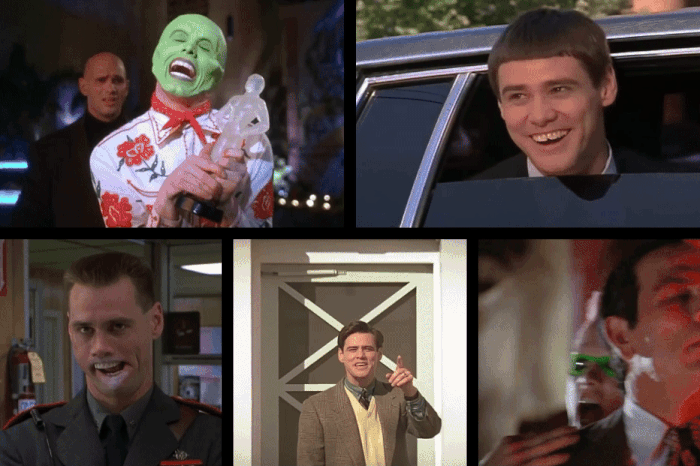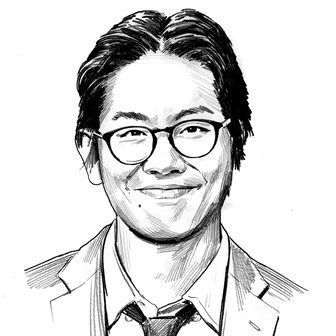
Everyone acts with teeth, but few really teeth act. This isn’t to refer to how certain actors have different tendencies when moving their jaws — or what comedian and celebrity impersonator Mary Elizabeth Kelly referred to as “mouth actors” in a May 2024 TikTok video sketching out variations between how, say, Hugh Grant speaks with his lower teeth while Keira Knightley uses the whole package. That’s just a reflection of how all people deal with their natural physiologies; normies like you and I, as human beings with mouths, can also be sorted into Kelly’s rubric in some way. Rather, by “teeth acting,” I’m talking about actors who explicitly use their teeth to work the camera.
Teeth actors can be broken down into three buckets. First, you have stars like Julia Roberts or Denzel Washington, who deploy their megawatt smiles like weapons of mass destruction. For them, teeth are central to the way they leave a lasting impression in your brain. Second, you have prosthetics-forward acting like Mike Myers in the Austin Powers movies, whose use of fake British dentistry is a variation on prop humor. When Myers squeezes his face around them, it’s flavor for the punch line. (“Yeah, baby, yeah!”) Finally, you have teeth acting at its most holistic, where each molar, incisor, and canine are integrated as direct extensions of a performance. In this category, there’s really only one true practitioner: Jim Carrey, the explosive Canadian American who has a near-superhuman ability to do it all. His teeth can give you an iconic moment. (“Somebody stop me!”) He can pull off prosthetics, but he doesn’t need to rely on them. And Carrey is capable of conjuring an entire sense of a character just using the insides of his mouth.
Carrey’s standard comedic persona has always been defined by its physical maximalism. Onscreen, he’s jittery and chaotic, like a Four Loko meltdown personified. When Fletcher Reede, his supernaturally truth-bound lawyer in Liar Liar, is trying his damndest to lie in the courtroom, Carrey injects about fifty rapid-fire tics into his meltdown. He convulses. He pulls his cheeks. He slaps one hand with the other. He jumps and gobbles and yells “YOU STUFFED HER LIKE A THANKSGIVING TURKEY!” He whips around and stretches out his limbs like a living, breathing Looney Tune. It’s why he worked so well as the third Roxbury guy on SNL, wriggling around in the club like a demonic Gumby in search of a mate. There’s an animalistic quality to Carrey, an element most literalized by the titular fauna-loving protagonist in the Ace Ventura movies. In When Nature Calls, after Ventura freaks out about being speared in both thighs, he whips back and forth between each pierced thigh, strikes a pose with a face of pure derangement, then emits a scream so guttural that, if you close your eyes, it sounds like a macaque.
What’s less obvious is how Carrey’s choppers are central to that maximalism. Ever present amid the limb flailing, back arching, and facial contortions is an expressive use of upper teeth, which jut out in a slight overbite that the actor pushes to its limits whenever he goes full wackadoo. They appear as a motif across Carrey’s quintessential characters. The otherworldly trickster he plays in The Mask isn’t just distinct for an engorged face with lime-green skin but also for its abyssal mouth that contains an unnatural set of cartoonish oversize teeth. Lloyd Christmas, the sweet idiot he plays in Dumb and Dumber, is iconic for both his bowl cut and a chipped front tooth that’s emphasized when pressed into a stupid, beaming smile.
When playing villains, Carrey’s teeth-forward style becomes an inversion of the Roberts-Washington school of megawatt smiles. That animal quality comes into play again: What does a predator do when they’re trying to instill fear? They show teeth. In Carrey’s case, he bares them all like they’re fangs. Take a look back at the poster for The Cable Guy, where he plays Matthew Broderick’s television-obsessed stalker: head lowered, brow tightened, lower lip curled to draw out those upper choppers. Consider how he carries himself as the Riddler in Batman Forever. There’s so much going on with Joel Schumacher’s version of Edward Nygma: prancing physicality, neon-red hair, a lime-green spandex suit that doesn’t hide very much. But even through all those extravagant choices, Carrey’s teeth stick to your brain like the Cheshire cat’s smile. His Edward Nygma is already visually provocative, but it’s the eerie gleam of his pearly whites that makes him grotesque. They pack a punch even when it comes to villains whose faces are underscored by other centerpieces. His take on Lemony Snicket’s Count Olaf, for example, features a fake nose and unkempt unibrow that frame his face, but Carrey injects layers of menace into the performance with subtle reveals of teeth. As The Grinch, the big sell is the way Carrey naturally contorts his face to conjure the Seussian character’s trademark grimace. But once again, the look is accentuated with Carrey’s quiet flashes of icky yellow incisors.
Carrey’s teeth are not just his most striking asset; they also represent an essential quality about the actor’s magnetism. Yes, he’s riotous, but you can also sense an unmistakable darkness beneath the surface. Teeth are naturally horrifying objects. They are not exposed bone but close enough. They exist to rip things to shreds. They are uncanny when viewed isolated from the mouth. They’re the perfect symbols for the way Carrey’s comedy often feels like it’s tipping over the edge of violence. Ace Ventura is a ball of slapstick but also of volcanic barbarism. Bruce Almighty jaunts through the travails of an ordinary person gifted the abilities of God, but there’s a cosmic horror to the prospect of a man accruing that kind of power. (In the movie, Bruce’s excitement over his newfound gifts is punctuated by an upskirt gag.) Liar Liar’s Fletcher Reede has a recurring bit featuring “The Claw,” which is supposed to be a bonding ritual with his kid meant to humanize his character as a father but can just as easily track as an unsettling bit of aggressive roughhousing.
But Carrey’s performances aren’t limited to maximalism. When playing serious roles, he swerves from that raw physicality in search of naturalism. This often means he’s relaxing his mouth and only selectively using his teeth. Eternal Sunshine of the Spotless Mind’s Joel, for example, is a fundamentally meek person. He doesn’t speak so much as mumble, a painfully shy man perpetually retreating into himself. When he meets Clementine on the train for the first time, he’s taken by her extroversion, but his timidity is retained in a stiff upper lip. He hides his teeth as if he’s ashamed of them. Truman Burbank begins The Truman Show at the height of his world’s artifice, and when we’re first introduced to him, we see him beaming big ol’ TV-star smiles to everyone in his path. But as Truman gradually learns the truth behind his reality, the brightness of his face dims. His pearly whites start appearing infrequently — until they’re flashed in their full glory one last time at the end.
Just as the late Peter Lorre’s bulging eyes remain his most enduring feature, teeth will be Carrey’s long after he’s gone. There’s even a mythological quality to the way teeth link to his story. One fun fact about Dumb and Dumber’s Lloyd Christmas is that his broken front tooth isn’t actually fake. Carrey had already chipped it due to a childhood mishap, and while he had it capped as an adult, the actor opted to revert it for the comedy of the character. “De Niro gains weight. I file my teeth off,” he told Entertainment Weekly in 1994. If that’s not evidence of the greatest teeth actor who ever lived, I don’t know what is.


